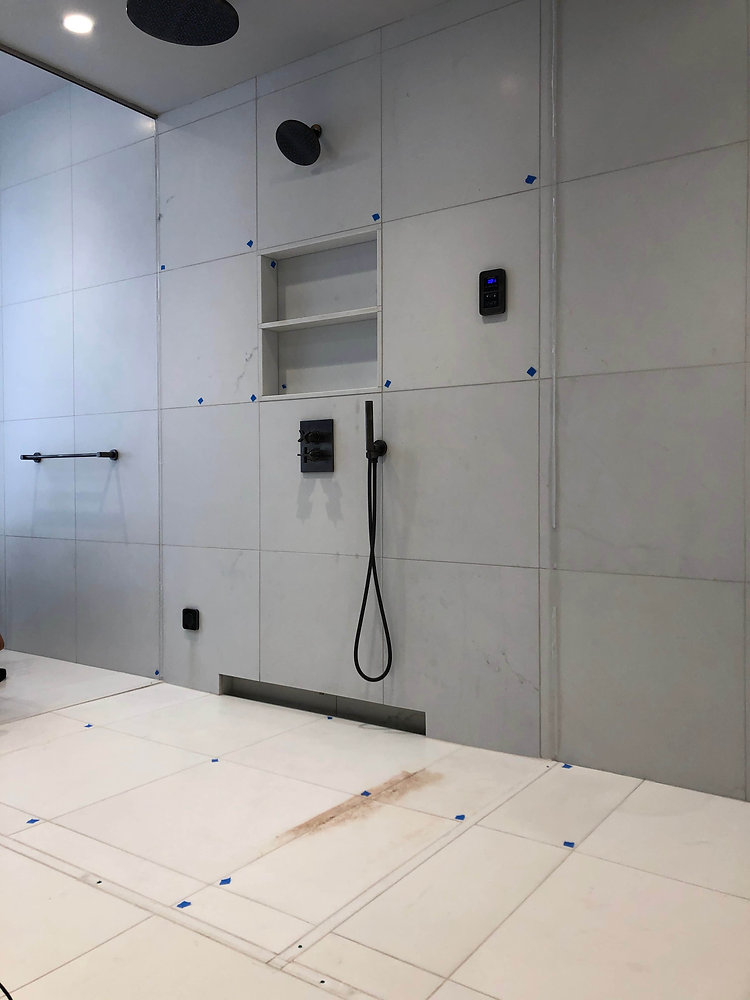Lee R Batchelor
New Member
Hi all. I'm new here and would really appreciate some advice.
I installed a shower about 5 years ago. It came with a base tray. The walls are single piece man-made marble. These walls sit on the inside lip of the base tray. I've re-caulked the shower twice and always ended up with mold in the corners of the walls and tray. Each time I remove the old caulking, there's water in the crack between the walls and tray lip. I'm trying to determine where it's coming from.
There are two glass doors - one fixed and the other slides on rollers. The fixed door is at the shower head end. The manufacturer says to not caulk any parts of the door on the inside of the shower, only the outside.
Is it possible that the water is seeping behind the marble walls where the door framing hardware is attached?
- or -
Am I using the wrong caulking technique? I have always applied the caulking and then rounded it inward with my finger. I watched a video about this and the fellow said that was the worst way to do it because it will always leak where the thin part contacts the wall and shower tray. Instead, he suggested using a 45 degree tool to create a more positive bond.
I suspect my issue is with the second one. I can post pics if needed. I really appreciate any opinions. Many thanks...
- Lee
I installed a shower about 5 years ago. It came with a base tray. The walls are single piece man-made marble. These walls sit on the inside lip of the base tray. I've re-caulked the shower twice and always ended up with mold in the corners of the walls and tray. Each time I remove the old caulking, there's water in the crack between the walls and tray lip. I'm trying to determine where it's coming from.
There are two glass doors - one fixed and the other slides on rollers. The fixed door is at the shower head end. The manufacturer says to not caulk any parts of the door on the inside of the shower, only the outside.
Is it possible that the water is seeping behind the marble walls where the door framing hardware is attached?
- or -
Am I using the wrong caulking technique? I have always applied the caulking and then rounded it inward with my finger. I watched a video about this and the fellow said that was the worst way to do it because it will always leak where the thin part contacts the wall and shower tray. Instead, he suggested using a 45 degree tool to create a more positive bond.
I suspect my issue is with the second one. I can post pics if needed. I really appreciate any opinions. Many thanks...
- Lee
Last edited by a moderator:


